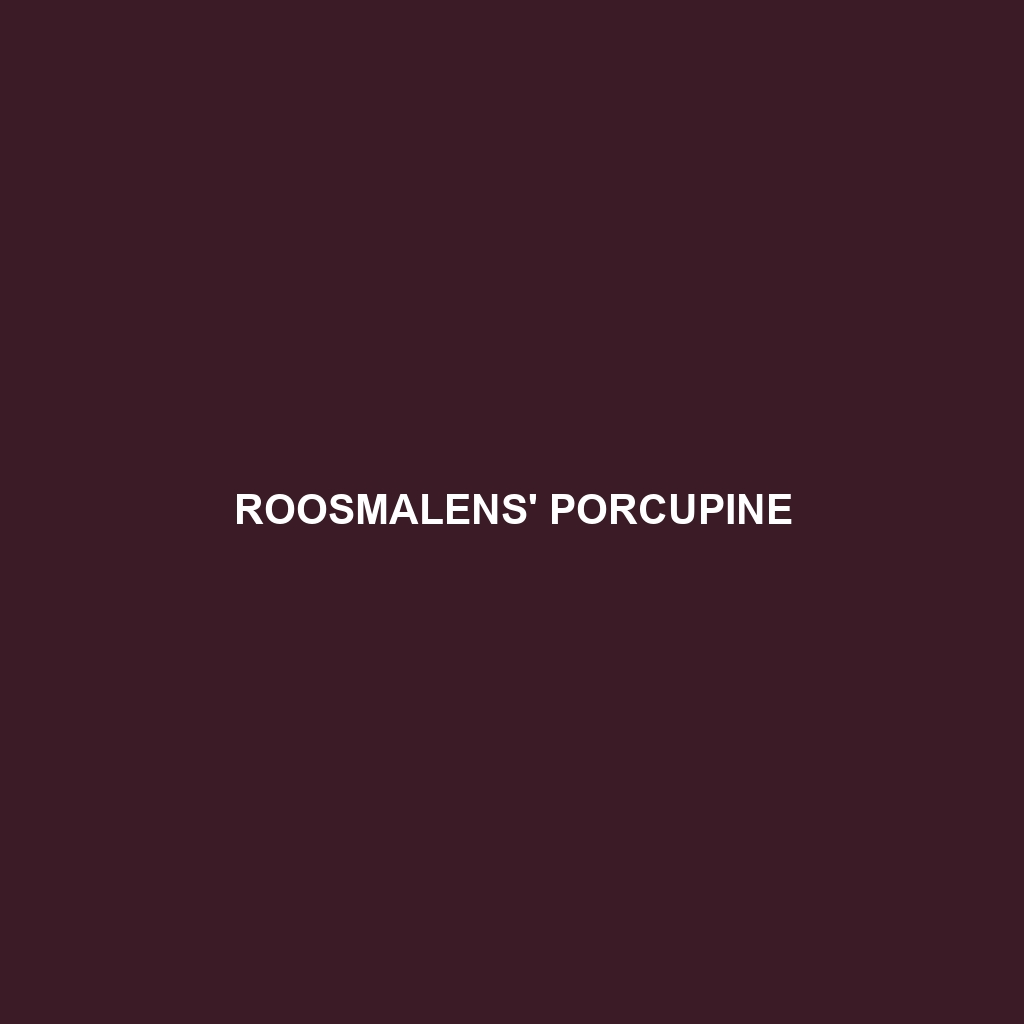Roosmalens’ Porcupine
Common Name: Roosmalens’ Porcupine
Scientific Name: Coendou roosmalenorum
Habitat: Roosmalens’ Porcupine is primarily found in the tropical rainforests of South America, particularly in the regions of central and southern Brazil, as well as parts of eastern Peru and western Colombia. These porcupines inhabit areas with dense vegetation, where they thrive in humid environments surrounded by a rich diversity of flora and fauna, often preferring lower to mid-level canopies.
Physical Characteristics: This species displays several distinctive physical characteristics, making it a unique addition to the porcupine family. Roosmalens’ Porcupine typically measures about 60 to 80 centimeters in length, excluding the tail, and weighs between 5 to 10 kilograms. Their fur is generally dark brown or black, adorned with lighter-colored quills that can range from cream to tan. Notably, these quills can retract when threatened, providing a defensive mechanism.
Behavior: Roosmalens’ Porcupine is primarily nocturnal, engaging in activities during the night when they forage for food. They are known for their arboreal lifestyle, spending most of their time in trees. These porcupines are solitary by nature, yet they can sometimes be seen in small groups. They are adept climbers and exhibit a range of vocalizations to communicate with one another, particularly during mating seasons.
Diet: The diet of Roosmalens’ Porcupine is herbivorous, primarily consisting of leaves, fruits, flowers, and bark from a variety of trees. Their feeding habits significantly contribute to seed dispersal in their environment, promoting plant diversity. They have strong, chisel-like teeth that enable them to gnaw through tough plant material.
Reproduction: Roosmalens’ Porcupine generally reproduces once a year, with a gestation period lasting about 4 to 5 months. Female porcupines typically give birth to a single offspring (though twins can occur), which are born fully furred and with their eyes open. Maternal care is extensive, with mothers nursing their young for several months until they are able to forage independently.
Conservation Status: The current conservation status of Roosmalens’ Porcupine is classified as vulnerable due to habitat loss and fragmentation caused by deforestation and human encroachment. Efforts are needed to preserve their natural habitat to ensure the survival of this distinct species.
Interesting Facts: An intriguing aspect of Roosmalens’ Porcupine is their quills, which possess antimicrobial properties, helping them to avoid infections when threatened. Additionally, they play a vital role in maintaining the health of their forest ecosystems by aiding in seed dispersal.
Role in Ecosystem: Roosmalens’ Porcupine plays a significant role in its ecosystem as a herbivore and seed disperser, which helps facilitate the growth of vegetation. This interaction enhances biodiversity and the overall health of the forest. Their presence can also affect the populations of other species, as they serve as both prey and competition in the food chain.
